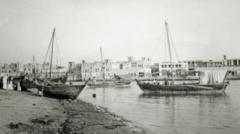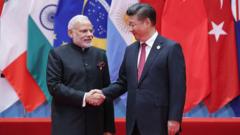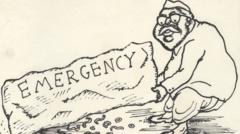This article explores the historical ties between Dubai and British India, examining how administrative decisions influenced the modern fate of Gulf states. It details the impact of colonization, the transition of governance, and the legacy of these connections as they cascade into contemporary identity.
The Gulf's Hidden History: How Dubai Was Once Tied to India's Empire

The Gulf's Hidden History: How Dubai Was Once Tied to India's Empire
A reflection on the lesser-known historical connection between the Arabian Peninsula and British India, highlighting the implications of territorial governance and identity in the region.
In the winter of 1956, David Holden, a correspondent for The Times, arrived in Bahrain, then a British protectorate, and found himself immersed in echoes of British India throughout the Gulf, from Dubai to Abu Dhabi and Oman. His experiences uncovered a paradox of influences and identities from the remnants of colonial rule—servants producing curries on Sundays and officials residing in Indian military uniforms, illustrating the interwoven histories that defined the region.
Holden noted that despite being largely forgotten today, a significant portion of the Arabian Peninsula was governed as part of the British Indian Empire early in the 20th century. Traces of this legacy, with Indian troops policing the area and Indian passports issued as far west as Aden (modern-day Yemen), remained evident, highlighting a complex relationship with India which many individuals in the Arabian Peninsula, like young Arabs during Gandhi’s 1931 visit to Aden, identified with.
Inherent contradictions shaped this alliance, though few in India or Britain were aware. For many years, the British kept maps detailing the extent of Indian governance in this region under wraps, as public knowledge could provoke geopolitical tensions. Meanwhile, a wave of Indian nationalism was emerging, leading to a pivotal shift in colonial policy. The first of several partitions took place on April 1, 1937, when Aden separated from India, heralding a new phase in colonial management.
Despite ongoing governance from British India over the Gulf states for another decade, discussions continued around whether India or Pakistan would administrate the Persian Gulf after independence. Ultimately, the region’s fate was formalized on April 1, 1947, mere months before India and Pakistan gained independence. This bureaucratic decision x-rayed the future, denying the Gulf states the option of merging with either nation—a fact that resonates even decades later.
Where the British Raj’s influence waned, new claims of sovereignty flourished, allowing Gulf states to construct their own narratives distancing themselves from their colonial past. As nationalism took root, the historical ties to India faded in the collective memory of the Gulf, despite private recollections of times when Indians were seen as a privileged caste.
Fast forward to today, and we see Dubai transformed from a minor outpost of the Indian Empire to a thriving metropolis of the Middle East. Many residents from India or Pakistan remain unaware of the historical landscape that might have seen their nations inherit oil-rich territories of the Gulf, paralleling other princely states like Jaipur or Bhopal. The severing of that past link—born from bureaucratic decisions amid the decline of empires—echoes through the region’s contemporary identity, blending memory and narrative into a complex tapestry of modern history.




















